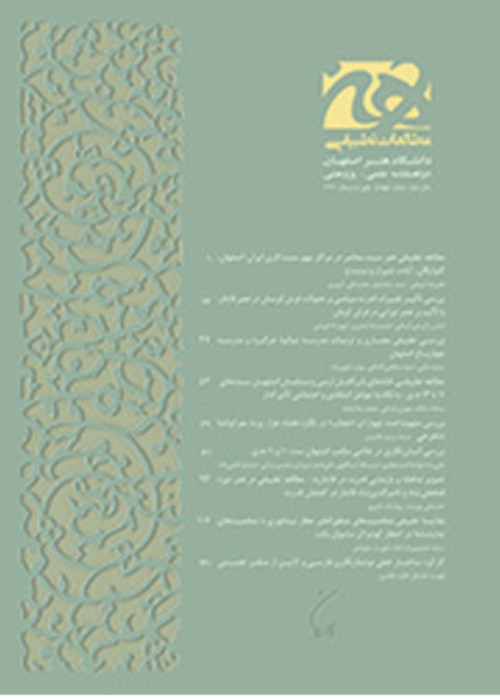Reading the Hooshang Shahi's Pictorial Rug with the Comparative Mythology Method
Pictorial Rugs are one of the most important achievements of rug designing during the Qajar period and a relatively large collection of these rugs is a collection of Houshang Shah rugs, which at that time became the bedrock for Shah on time illustration in the form of Houshang Shah. During the Qajar period, this representation was repeated on a large scale (in terms of number and geographical distribution) on pictorial rugs. The formation of these works at the time of the Qajar period and their volume and variety led this research to study why and how King Zamaneh was represented under the name of Houshang Shah during the mentioned period. The present study tries to answer the following questions by considering these versions of Houshang Shahi's rug in the Qajar period and selecting one of them: Why did the rug weaver of Qajar era consider two characters from two completely different paradigms to be the same? What is the reason? The present study chose a comparative approach and selects the comparative mythology method and the Georges Douzil’s trifunctional theory for studying the case of this research. Studying the case of this research is based on scholar resources and direct narrative texts, to analyze the data of this research in a systematic and methodical way. The result of this study, knowing that the design of Houshang Shahi rug is derived from the archaic discourse of its own times, shows that the designer of this particular rug has tried to design society's welfare by designing a classic system and establishing objective relations among members of the classes. It depends on the systematic unity of these classes. And this unity depends on the existence of a ruler that is self-sufficient in all fields, so that he can connect all elements of society and create an integrated whole.
- حق عضویت دریافتی صرف حمایت از نشریات عضو و نگهداری، تکمیل و توسعه مگیران میشود.
- پرداخت حق اشتراک و دانلود مقالات اجازه بازنشر آن در سایر رسانههای چاپی و دیجیتال را به کاربر نمیدهد.



